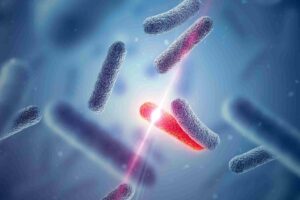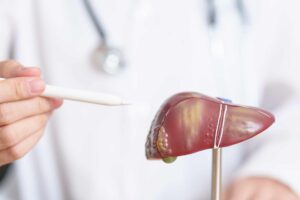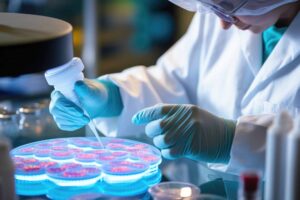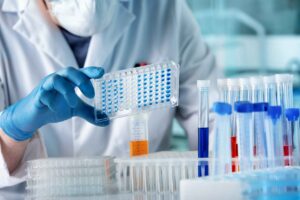What is already known
High levels of cholesterol in the blood can lead to heart disease, and 1 in 4 people over 40 years old manage their high blood cholesterol using a drug called statin. While statin use is highly recommended to lower the risk of heart disease, research has found that the drug increases blood sugar, which can put people at higher risk of developing type 2 diabetes. Changes in the composition and function of the gut microbiota have also been associated with obesity and insulin resistance, which is a risk factor for diabetes.
What this research adds
For 16 weeks, researchers monitored 30 people treated with statin and found that they have lower abundance of Clostridium bacteria in their stool as well as altered levels of secondary bile acids in their blood and stool compared with controls. Mice treated with statin developed glucose intolerance — a series of metabolic conditions that result in higher than normal blood sugar levels. Transplanting Clostridium bacteria in the mice’s gut or giving the animals the secondary bile acid ursodiol improved statin-induced glucose intolerance. Administering ursodiol to people treated with statin also eased glucose intolerance without impairing the drug’s cholesterol-lowering effect.
Conclusions
The findings show that statin-induced high blood sugar levels are associated with Clostridium bacteria and bile acids. The work also suggests that ursodiol may help reduce the adverse effects of statin on blood sugar levels.
High levels of cholesterol in the blood can lead to heart disease, and 1 in 4 people over 40 years old manage their high blood cholesterol using a drug called statin. While statin use is highly recommended to lower the risk of heart disease, research has found that the drug increases blood sugar, which can put people at higher risk of developing type 2 diabetes. Now, a study in people and mice shows that statin-induced high blood sugar levels are associated with gut bacteria and some of their metabolites.
The work, published in Cell Metabolism, also suggests that ursodiol, a secondary bile acid produced by gut bacteria, may help reduce the adverse effects of statin on blood sugar levels.
Why some people treated with statins develop type 2 diabetes is unknown. However, changes in the composition and function of the gut microbiota have been linked to obesity and insulin resistance, which is a risk factor for diabetes.
To investigate whether the gut microbiota and its metabolites may contribute to the high blood sugar levels associated with statin therapy, researchers led by Jianqing She at the First Affiliated Hospital of Xi’an Jiaotong University in China monitored 30 people treated with statin and 10 controls over the course of 16 weeks.
Bile acid metabolism
The researchers found that people treated with statin have lower abundance of Clostridium bacteria in their stool compared with controls. These individuals also showed altered levels of secondary bile acids in their blood and stool. Secondary bile acids are the products of gut microbes and can regulate microbial composition.
Statin increased the participants’ fecal levels of chenodeoxycholic acid, a primary bile acid produced in the liver, but decreased levels of ursodiol, a microbial-derived secondary acid. Previous studies have shown that gut microbial enzymes convert chenodeoxycholic acid to ursodiol. “The alteration of the chenodeoxycholic acid-to-ursodiol ratio after statin therapy implied that statins might affect bile acid metabolism by regulating the gut microbiota,” the researchers say.
The abundance of fecal Clostridium species was associated with the transformation of chenodeoxycholic acid to ursodiol, and lower levels of these microbes correlated with higher blood sugar levels, the team found.
Ursodiol–Clostridium axis
To study the effects of statin on sugar metabolism, the researchers treated mice with the drug for 12 weeks. Animals treated with statin developed glucose intolerance — a series of metabolic conditions that result in higher than normal blood sugar levels.
Transplanting Clostridium bacteria in the mice’s gut or giving the animals ursodiol improved statin-induced glucose intolerance. Administering ursodiol to people treated with statin also eased glucose intolerance without impairing the drug’s cholesterol-lowering effect.
“Our results provide evidence that targeting the [ursodiol]–Clostridium axis provides protective benefits against the glucose intolerance induced by statin therapy,” the researchers say. “Since [ursodiol] has been a commonly used drug for treating liver disease patients, it is reasonable to expect that the combined [ursodiol] and statin therapy could become the new standard of care for lipid-lowering therapy.” However, they add, larger studies are needed to confirm the long-term cardiovascular benefits of such treatment.











